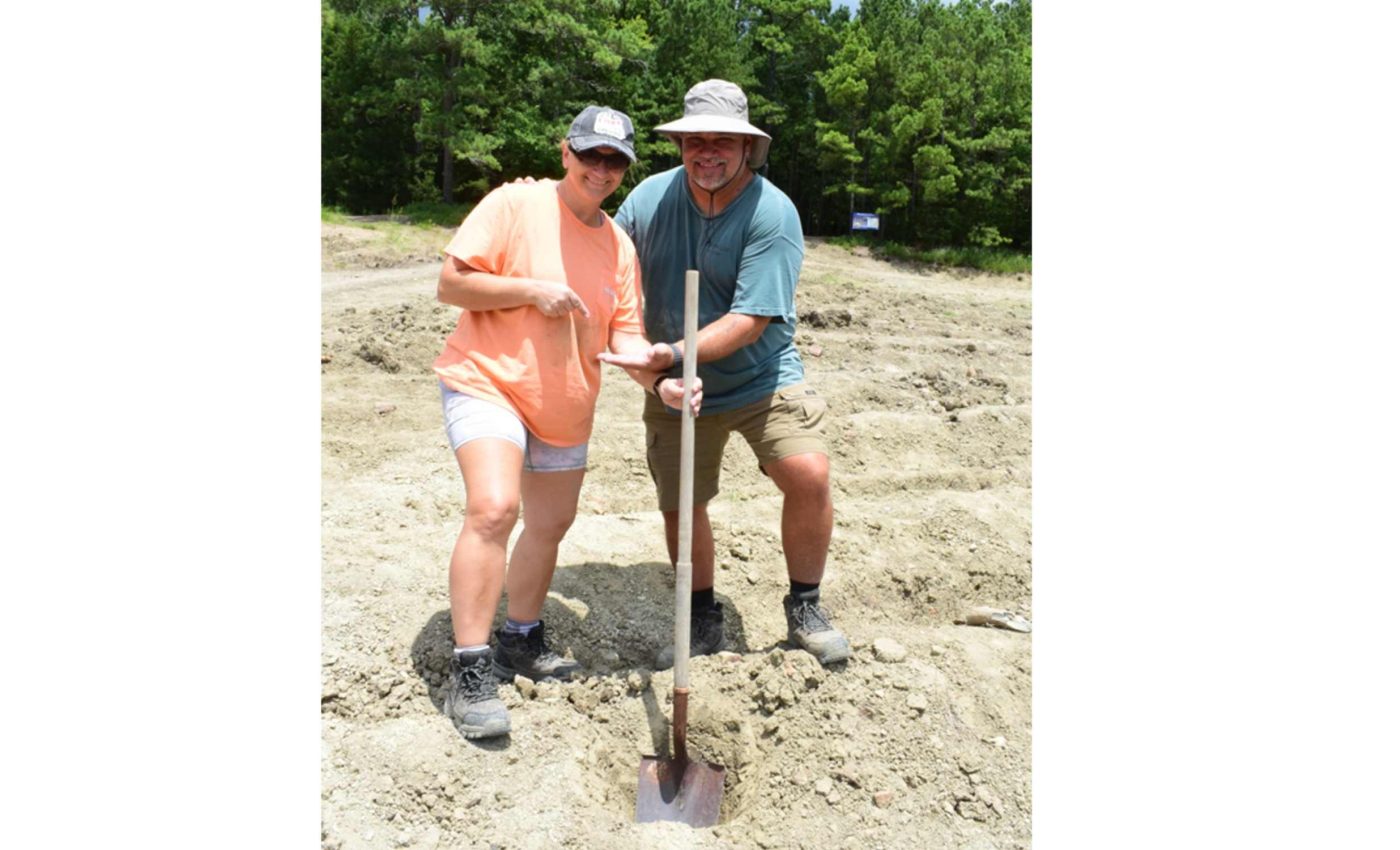
Taking a nice walk in the park, they found a 3.36-carat diamond
A Florida couple visited Crater of Diamonds State Park in Arkansas and found a 3.36-carat white diamond about the size of a blueberry.
They spotted it while wet sifting, a water-washing method that separates heavier gravel from lighter soil, then checked it at the park’s identification table.
Diamond field open to all
The effort is led by Arkansas State Parks, the public agency that manages the Crater of Diamonds. Its staff registers every diamond find and teaches visitors how to search.
Visitors keep what they find in a 37.5-acre search area at the park. Most visitors use simple screens, buckets, and patience.
Sunlight can make a clean diamond glint, but the park encourages careful screening so smaller stones are not missed.
A volcano made diamonds
State geologists classify the bedrock as lamproite, a diamond-bearing volcanic rock related to deep mantle magmas.
Lamproite, an uncommon volcanic rock that can ferry mantle minerals upward, rises fast enough to deliver crystals without melting them.
The eruption left a diatreme, a carrot-shaped volcanic vent filled with broken rock. That fractured pipe weathers into loose gravel where diamonds can be found near the surface.
The pull of repeat visits
Each year, thousands of visitors travel to Murfreesboro with screens, shovels, and hopes of uncovering a gem.
The park logs an average of one to two diamond finds per day, proving that luck and persistence still pay off. While most stones are small, every visitor has an equal chance of finding one.
The constant plowing of the search field renews that hope. Turning the soil keeps deeper gravel layers exposed, ensuring that diamonds washed up by rain or unearthed by weather remain within reach of casual diggers. That simple maintenance routine makes every visit a fresh opportunity for discovery.
Spotting diamonds in the dirt
The park teaches three methods, but most success comes from washing and concentrating heavy gravel. Diamonds stand out because of specific gravity, a measure of how dense something is compared to water.
“I was stunned when I saw the pictures of the diamond. The shape, clarity, color, and size made it a beautifully natural gemstone,” said Park Superintendent Caleb Howell.
America’s famous diamond finds
More than 75,000 diamonds have been unearthed at the site since 1906, according to the park’s history.
The largest diamond ever found in the United States came from this ground in 1924. Today, the 12.42-carat cut gem made from the original 40.23-carat “Uncle Sam” sits in the Smithsonian collection.
One modern standout is the Strawn-Wagner. That 3.03-carat rough was cut to 1.09 carats and graded “perfect.”
The draw of easy digging
What makes the Crater of Diamonds stand out is how ordinary the experience feels. People arrive in shorts and sneakers, pay a modest entrance fee, and step into a field that could just as easily be a farm.
Yet that same soil has produced gems worth thousands of dollars, and that contrast keeps drawing visitors back year after year.
Unlike professional mines sealed off by corporations, this park leaves the thrill of discovery in public hands. It’s one of the few places where geological history, chance, and human curiosity meet on equal footing.
Every diamond found, no matter the size, becomes proof that nature’s treasures still lie just beneath our feet.
Clues from the discovered gems
The new find, nicknamed the Dash Diamond, fits the park’s pattern of white, brown, and yellow stones. Many are water-worn crystals with rounded edges and a waxy shine.
A diamond’s look depends on how it grew and what fluids touched it deep underground. Growth zones can create a clear core with pale rims, which matches this stone’s description.
People name their diamonds
Many visitors who find diamonds at the park choose to name them, turning a mineral discovery into a personal story.
The tradition began decades ago and adds a sense of pride and memory to each find. For some, the name reflects a person, a pet, or a moment that made the search special.
Names like “The Dash Diamond” and “The Duke Diamond” show how people connect their experiences to the land. Each named stone becomes more than a gem; it becomes a reminder of the time and effort behind it, carrying emotional value long after it leaves the park.
A rare public diamond field
Diamonds form under high pressure and temperature far below Earth’s crust, reaching the surface only when rare magmas rise fast enough to carry them like passengers.
At Crater of Diamonds, centuries of weathering – and even routine plowing – keep turning the soil, gradually lifting these resistant crystals to places where simple tools can still uncover them.
Public access to a natural diamond source is unusual, and the park blends science education with hands-on discovery.
Visitors learn real field skills and then immediately get to test them, producing a steady stream of small finds and the occasional headline-making stone.
—–
Like what you read? Subscribe to our newsletter for engaging articles, exclusive content, and the latest updates.
Check us out on EarthSnap, a free app brought to you by Eric Ralls and Earth.com.
—–













